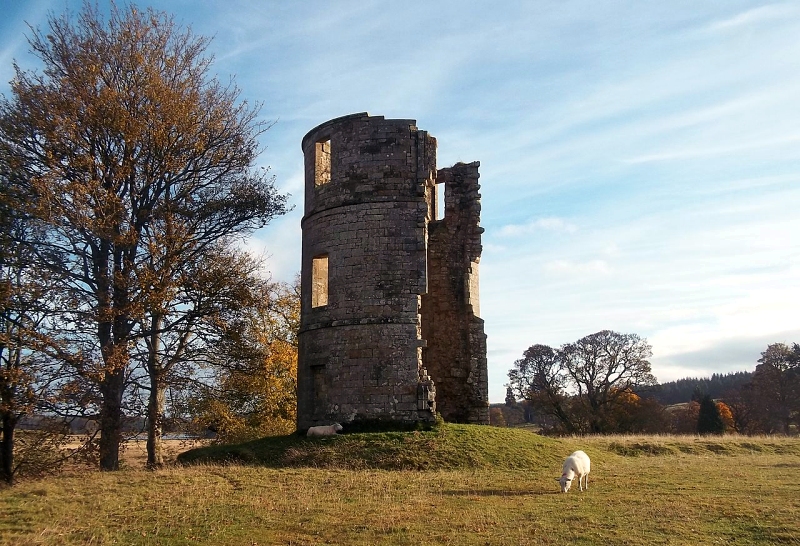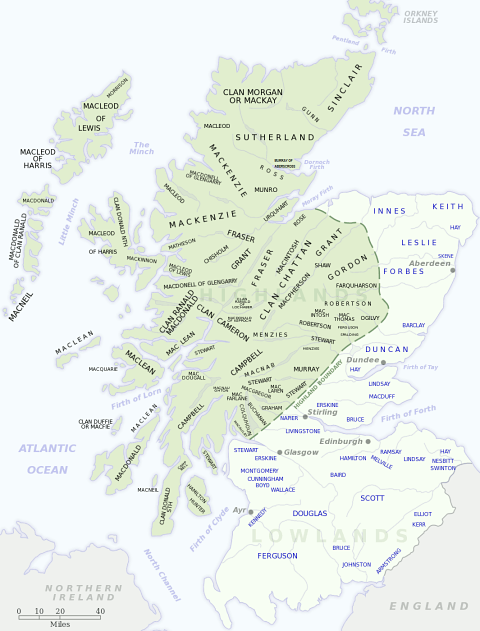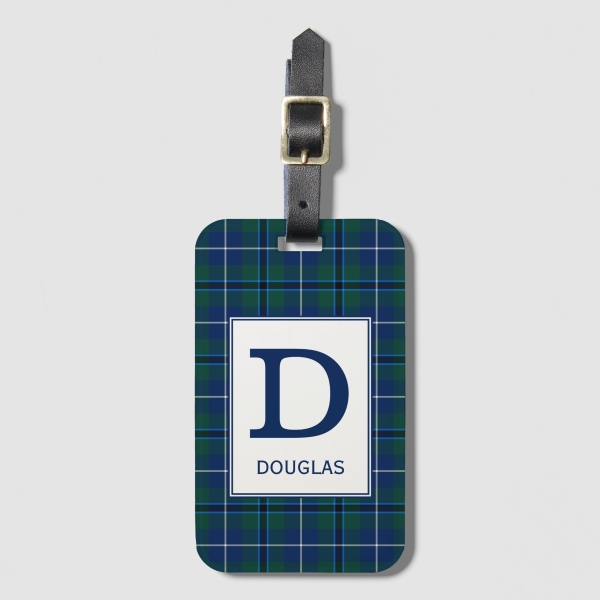
Motto: Jamais arrière (Never behind)
Historic Seat: Douglas Castle
District: Lanarkshire
Associated Surnames: Cavers, Drysdale, Forrest, Glendinning, Kirkpatrick, Lockerbie, MacGuffie, Morton, Sandilands
Associated Tartans:
Early Douglas Genealogy and History:
(Excerpt from "The Scottish Clans and Their Tartans", James Grant, 1906)
There are many legends of the origin of this powerful family, but the first recorded is William of Douglas, the name being derived from the wild pastoral dale he possessed. He appears as a witness to charters by the King and the Bishop of Glasgow between 1175 and 1213. He was either the brother or brother-in-law of Sir Freskin of Murray, and had six sons, of whom Archibald, or Erkenbald, was his heir, and Brice rose to be Bishop of Moray.
Archibald is a witness to charters between 1190 and 1232, and was knighted. Sir William of Douglas, apparently the son of Sir Archibald, figures in records from 1240 to 1273. His second son, distinguished in family traditions as William the Hardy, spoiled the monks of Melrose, and deforced the King's officers in the execution of a judgment in favour of his mother. He joined Wallace in the rising against the English in 1297. He possessed lands in one English and seven Scottish counties.
His son, the Good Sir James, is known as the greatest captain of Bruce in the long war of independence. "The Black Douglas," as he was called was victor in fifty-seven fights, his name became a terror to the border country. In 1330, when on his way to Jerusalem, there to deposit the heart of his royal friend Bruce, he was killed fighting against the Moors in Andalusia. His son William fell at Halidon Hill1, and the next Lord of Douglas, Hugh, brother of Lord James, and a canon of Glasgow, made over the great estates of the family in 1342 to his nephew Sir William.
The Douglases had, since the time of William the Hardy, held the title of Lords of Douglas; but in 1357, Sir William, who had fought at Poitiers, was made Earl of Douglas, and by marriage became Earl of Mar. In 1371 he disputed the succession of the Scottish crown with Robert II, claiming as a descendant of the Baliols and Comyns. He died in 1384. His son James, second Earl of Douglas and Mar, the conqueror of Hotspur, fell at Otterburn2 in 1388, and as he left no legitimate issue, the direct male line of William the Hardy and the Good Sir James now came to an end. His aunt had married for her second husband one of her brother's esquires, James of Sandislands, and through her Lord Torphichen, whose barony was a creation of Queen Mary in 1564, is now the heir general and representative at common law of the House of Douglas.
William of Douglas was father of Sir Archibald Douglas, who had two sons; from the younger, Sir Andrew, descended the Earls of Morton, Viscount Belhaven, and Baron Penrhyn; and the elder, Sir William was the father of another Sir William who had three sons: (1) the Good Sir James, from whom descended the third (illegitimate), fourth, fifth, sixth, seventh, eighth, and ninth Earls of Douglas, first and second Dukes of Touraine, Earl of Ormond; (2) Hugh; (3) Archibald, who was the father of William first Earl of Douglas, who was father of James, second Earl.
This second Earl had two natural sons: (a) William from whom descended the Dukes of Queensberry and Dover, Earls of March, Ruglin, and Solway, etc.; (b) Archibald, from whom descended Douglas of Cavers. William the first earl of Douglas, had also a natural son, George, Earl of Angus, from whom descended the Dukes of Douglas, Hamilton, Brandon, and Chatellerault, Marquesses of Douglas, Earls of Selkirk, Ormond, Forfar, Dumbarton, and Barons Glenbervie, etc.
(End excerpt)
Next page: Clan Drummond
Footnotes:
1 The Battle of Halidon Hill (1333): The Battle of Halidon Hill was fought on 19 July 1333 during the Second War of Scottish Independence between Scottish forces led by Sir Archibald Douglas and the English forces of King Edward III of England, near Berwick, a disputed territory in the borderlands between England and Scotland. Read more about the Battle of Halidon Hill at Wikipedia.
2 The Battle of Otterburn (1388): The Battle of Otterburn was fought in August 1388 (conflicting sources state both the 5 August and the 19 of August) in Northumberland, England. It was fought between invading Scots, led by James, 2nd Earl of Douglas, and the border forces of England. Read more about the Battle of Otterburn at Wikipedia.

Distribution of Scottish clans and families
View larger map at Wikimedia Commons

Browse the Clan Douglas Tartan Collection with home decor, personal accessories, crafting, paper products, and more.

Browse the Lanarkshire Scotland District Tartan Collection with clothing, home decor, accessories, electronics cases, and more.